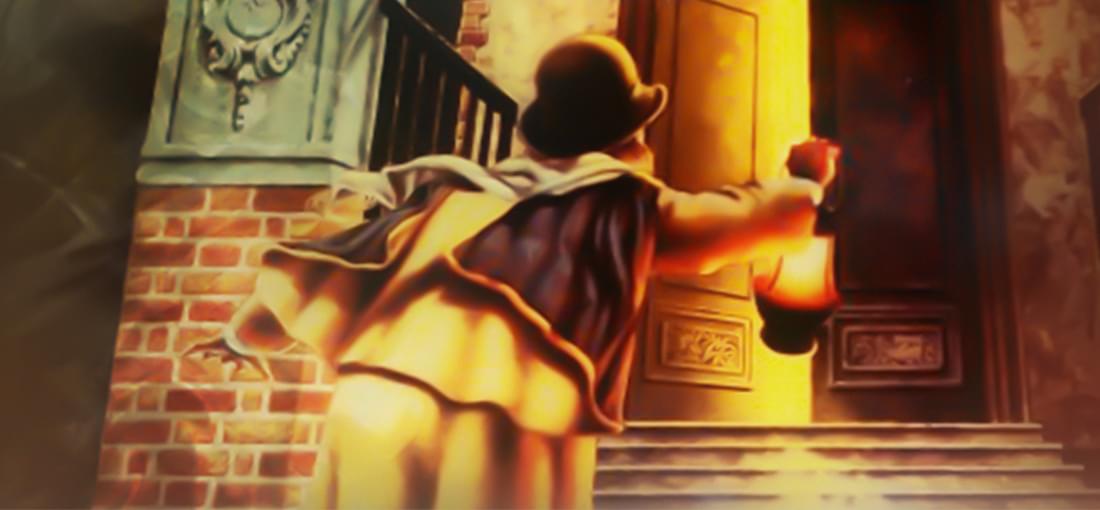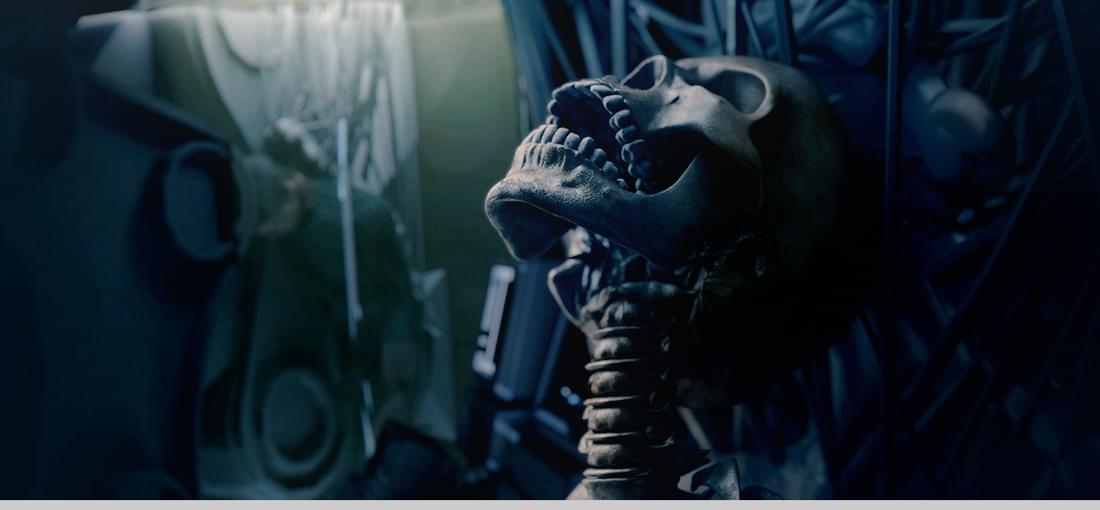


If all you know about Alone in the Dark is the execrable 2005 Uwe Boll film, I know this will be difficult given what a toxic atrocity that movie is, but trust me: 1992s Alone in the Dark is a wonderful, scary, atmospheric classic that shares nothing with the film other the title and character names. If you’ve never seen the film, let me just stop you here: don’t, but definitely play the game. I first played Alone in the Dark on my Amiga 500. Having read a number of Lovecraft stories, I was thrilled to find a game that sought to emulate the cosmic horror of the Cthulhu Mythos. As crude as it all may seem now, the 3D models against the beautiful pixel art backgrounds and the fixed camera angle cinematic stylings blew my mind. I suppose that just as it’s hard to believe that audiences were truly scared by (the wonderful) Browning’s Dracula and Whale’s Frankenstein, playing Alone in the Dark on release was scary – there was a very real sense of playing a horror film. The surprise early monster encounter was a legitimate jump-scare, and the first zombie, arms outstretched, slowly creeping into the room, genuinely frightened me. Certainly, technological progress and games that built upon Alone in the Dark‘s foundation have blunted these experiences considerably, but this is where 3D survival horror started, and it still has a dark power about it that makes it worth playing even today. I never finished it back in 1992. I found it tremendously difficult, and much of that is the limited resources and adventure game puzzles combined with a clunky-even-for-92 interface. Any Resident Evil vet will recognize the tank controls, but that’s not the only challenge. In order do anything, one must navigate a sub-menu of commands and inventory items, and then, press the action button. Aiming is pure guesswork for the most part, and combat is a fumbling mess. Like adventure games of old, there’s places you can just outright die merely by exploring, and you can find yourself in a situation where you can’t finish the game due to expended resources. This is an old game, so one must expect a certain archaic essence. So, yes: sometimes, this game can be a real pain to play. But as I said above, it’s very much worth playing today. It’s still a wonderful evocation of horror and of Lovecraft in particular. There’s a sense of urgency and tension, aided by the early game surprises that can end in death if you don’t act fast. The very first room can result in a death in a minute or less from a toothy, avian nightmare if you don’t take certain actions. Obnoxious to be sure, but also, surprising, scary, a sense that anything can happen, and a subversion of expectations – this is what horror is all about. The music is effectively chilling, and the primitive sound effects are still eerie – I’ll never forget the footstep noises, or the smash of the upstairs window. There’s a number of in-game texts that are pretty darn cool Lovecraftian tales that are still worth reading. Once you come to grips with the game and the interface and as long as you save often, it’s really not that difficult, and if you get stuck, there’s many a walkthrough on the internet to help you out. While Alone in the Dark was certainly surpassed technologically, it’s still a wonderful experience I highly recommend. It’s available on GOG for purchase for a cheap price along with it’s sequels, so if you’re looking for a trip to Lovecraft country, give it a go. It’s one of the best adventure games ever made, one of the best horror games ever made, and it’s also a fascinating stepping stone in the development of survival horror – if you want to see where it all started to come together, this is it.

Stasis is something of a miracle. It’s a tiny budget game made by the tiny team at The Brotherhood Games (the majority of the development was handled by brothers Chris and Nic Bischoff), five years in the making, and it’s one of the best adventure games I’ve played in a long, long time. The game opens above Neptune on the medical research vessel the Groomlake as main character John Marachek awakes from stasis. He’s woozy, injured, and things have gone very, very wrong in the time that he’s been asleep. John doesn’t know where his wife and child is, so he sets off to find them. Lights flicker, broken computers spark, blood and bubbling ooze abound, and we’re off on a gothic science fiction horror show. While there are a couple of jump scares in Stasis, the game is more concerned with disturbing you. Kurt Vonnegut said in his rules of fiction, “Be a Sadist. No matter how sweet and innocent your leading characters, make awful things happen to them-in order that the reader may see what they are made of.” The Bischoff’s are sadists, and I mean that as the best sort of compliment. John Marachek is put through hell, forced to perform morally compromising actions and suffer horrors of all kinds. I’m rarely surprised by games, but Stasis managed to surprise me with the depths it sunk to. As you guide John through the Groomlake, you’ll face somewhat typical adventure game puzzles – pick up items, combine them, use them where they’re needed – and it’s here that the game stumbles a little. While the majority of the puzzles are pretty great (I particularly enjoyed the puzzles that required me to really pay attention to the environments), there were a couple of times when I was stumped. When that happens, the game kind of grinds to a halt as you run around, clicking on things, trying combinations, running the mouse over the environment hoping for hot spot hits. It’s a problem common to the adventure genre so Stasis is not the only offender, but it is still a problem. Where this really becomes a problem is when there seemingly aren’t enough hints. The hydroponics area held me up for a while, as did the stasis chamber puzzle (although that one was fair, it just needed some laser focused examinations). I couldn’t figure out where to go at one point, but as it turns out, I just didn’t walk in the right spot, which seems unfair. While I generally loved reading the PDA journals that divulge clues and tell the stories of the characters that inhabited the Groomlake – I particularly enjoyed reading about the technician who had some bad luck and an unhappy marriage – there can be times where you have to sit and read quite a bit at one time. The villain is a little flat, coming off as a bit of a one-note version of Doctor Frankenstein. It’s all forgivable, because the rest of Stasis is just so strong. Stasis’ environments are absolutely stunning, so much so that I found myself constantly screenshotting. To paraphrase Hellraiser’s Pinhead, the Bischoff’s have such sights to show you. It’s a joy to explore the horrifically gorgeous world of the Groomlake. The sound design is also great, as is the tremendous music by game legend Mark Morgan, Christopher Bischoff, Daniel Sadowski, Jovana Djordjevic, and Meesah Kuteyi. One holdover from adventure games of yore that I was delighted to see return was that John can die, the pains of which are mostly avoided due to autosaves. The new, episodic King’s Quest game from The Odd Gentlemen also employed this, and both it and Stasis show how old mechanics can be freshened up and made palatable again. I enjoyed every single one of the gruesome deaths that I lead John Marachek to - I'm sure that the Brotherhood truly enjoyed thinking up and animating each one. If you have any love for adventure games, buy Stasis now. It’s a beautiful, horrifying ode to Alien, Event Horizon, BioShock, Dead Space, and The Dig. It’s scary, it’s smart, it has a dark sense of humor, and it has soul. I was frequently disturbed, and I was left exhausted and beaten down by the end. What more can you ask of horror? Highly recommended.